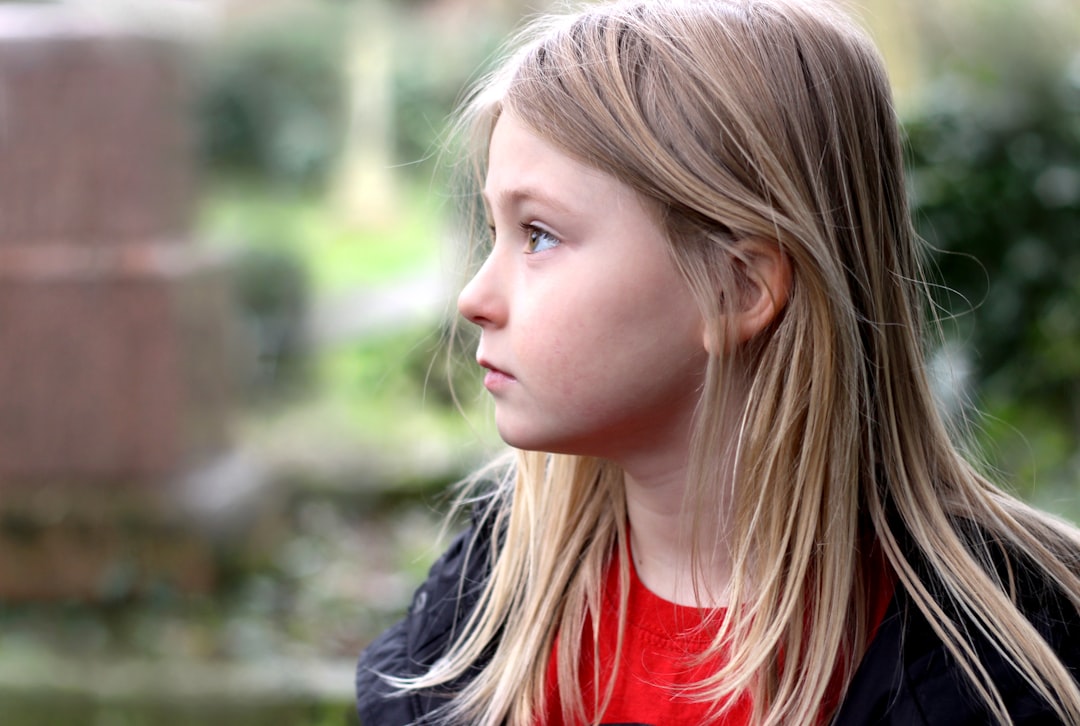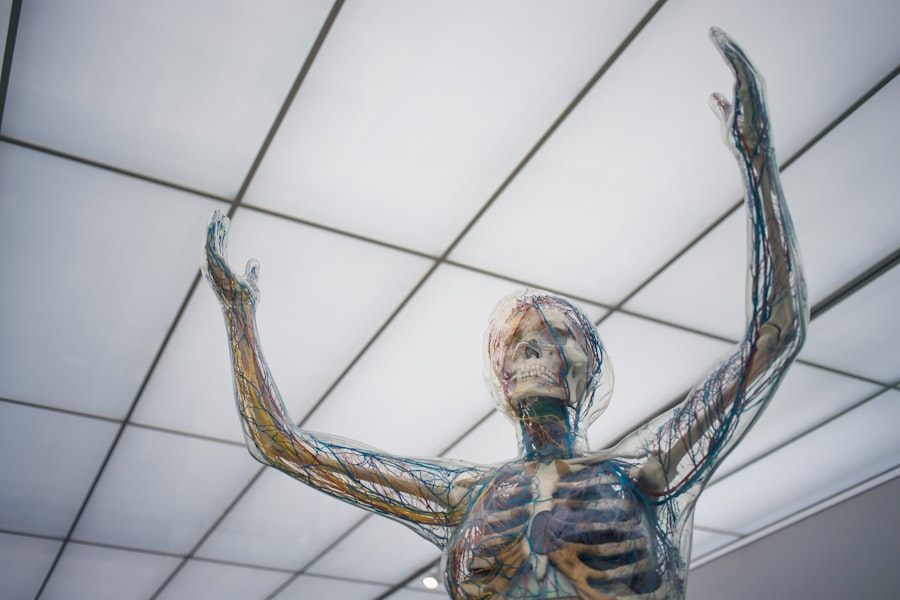Addressing ADHD and Bad Behavior in Children

Attention Deficit Hyperactivity Disorder (ADHD) is a neurodevelopmental disorder that affects children and often persists into adulthood. It is characterized by symptoms such as inattention, hyperactivity, and impulsivity. These symptoms can lead to difficulties in various areas of a child’s life, including academic performance, social interactions, and emotional well-being. Understanding and addressing ADHD and bad behavior in children is crucial for their overall development and success.
Key Takeaways
- ADHD and bad behavior in children can have negative effects on their development.
- Symptoms of ADHD in children include hyperactivity, impulsivity, and inattention.
- Causes of ADHD and bad behavior in children can include genetics, brain chemistry, and environmental factors.
- Diagnosis of ADHD and bad behavior in children involves a comprehensive evaluation by a healthcare professional.
- Treatment options for ADHD and bad behavior in children include medications, therapies, behavioral interventions, and parenting strategies.
Understanding ADHD and Bad Behavior in Children
ADHD is a complex disorder that involves a combination of genetic, environmental, and neurological factors. It is important to differentiate between ADHD and bad behavior, as they are not the same thing. Bad behavior refers to actions that are inappropriate or disruptive, while ADHD is a neurobiological condition that affects a child’s ability to regulate their behavior.
One common misconception about ADHD is that it is simply a result of poor parenting or lack of discipline. However, research has shown that ADHD is a legitimate medical condition with biological underpinnings. It is not caused by poor parenting or a lack of discipline, although these factors can exacerbate symptoms.
Identifying the Symptoms of ADHD in Children
The symptoms of ADHD can vary depending on the individual and their age. Inattention symptoms include difficulty paying attention, being easily distracted, and forgetfulness. Hyperactivity symptoms manifest as excessive fidgeting, restlessness, and difficulty staying seated. Impulsivity symptoms include acting without thinking, interrupting others, and difficulty waiting their turn.
In younger children, symptoms may be more pronounced and include excessive running or climbing, difficulty playing quietly, and talking excessively. In older children and adolescents, symptoms may be more subtle but still impact their daily functioning.
The Effects of ADHD and Bad Behavior on Children’s Development
ADHD and bad behavior can have significant effects on a child’s development in various areas. Academically, children with ADHD may struggle with staying focused, completing tasks, and organizing their work. This can lead to poor academic performance and lower self-esteem.
Socially, children with ADHD may have difficulty making and maintaining friendships. They may struggle with impulse control, leading to conflicts with peers. Additionally, their hyperactivity and inattention can make it challenging for them to engage in group activities or follow social cues.
Emotionally, children with ADHD may experience higher levels of frustration, anxiety, and low self-esteem. They may feel misunderstood or judged by others, which can further impact their emotional well-being.
In the long term, untreated ADHD can have negative effects on adult life. Adults with ADHD may struggle with maintaining employment, managing finances, and maintaining healthy relationships. However, with appropriate interventions and support, individuals with ADHD can lead successful and fulfilling lives.
Causes of ADHD and Bad Behavior in Children
The exact causes of ADHD are not fully understood, but research suggests that it is a combination of genetic and environmental factors. Studies have shown that there is a strong genetic component to ADHD, with a higher likelihood of having the disorder if a close family member also has it.
Environmental factors such as exposure to toxins during pregnancy, premature birth, low birth weight, and maternal smoking during pregnancy have also been associated with an increased risk of developing ADHD.
Brain development and function play a significant role in ADHD. Neuroimaging studies have shown differences in the structure and function of the brains of individuals with ADHD compared to those without the disorder. These differences affect areas of the brain responsible for attention, impulse control, and executive functioning.
Other contributing factors to ADHD include prenatal exposure to alcohol or drugs, brain injuries, and certain medical conditions such as lead poisoning or thyroid problems.
How to Diagnose ADHD and Bad Behavior in Children

Diagnosing ADHD involves a comprehensive evaluation that takes into account the child’s symptoms, medical history, and observations from parents, teachers, and other caregivers. The Diagnostic and Statistical Manual of Mental Disorders (DSM-5) provides criteria for diagnosing ADHD, including specific symptoms that must be present for a certain duration and impairment in multiple settings.
Assessment tools such as rating scales and questionnaires are often used to gather information about the child’s behavior and functioning. These tools can help to provide a more objective measure of the child’s symptoms and their impact on daily life.
It is important to obtain an accurate diagnosis of ADHD, as this can guide appropriate interventions and support. Misdiagnosis or failure to diagnose ADHD can result in ineffective treatment or unnecessary stigma for the child.
Medications and Therapies for ADHD and Bad Behavior in Children
Medication is often prescribed as part of the treatment plan for children with ADHD. Stimulant medications such as methylphenidate (Ritalin) and amphetamines (Adderall) are commonly used to manage symptoms of ADHD. These medications work by increasing the levels of certain neurotransmitters in the brain, which helps to improve attention and impulse control.
While medication can be effective in reducing symptoms, it is not a cure for ADHD. It is important to weigh the benefits and risks of medication and work closely with a healthcare provider to find the right medication and dosage for each individual child.
In addition to medication, various therapies can be beneficial for children with ADHD and bad behavior. Behavioral therapy focuses on teaching children skills to manage their behavior, improve social skills, and develop strategies for coping with challenges. Cognitive-behavioral therapy (CBT) can help children identify and change negative thought patterns that contribute to their behavior.
Behavioral Interventions for ADHD and Bad Behavior in Children
Behavioral interventions are an essential component of managing ADHD and bad behavior in children. Positive reinforcement is a key strategy that involves rewarding desired behaviors to encourage their repetition. This can be done through verbal praise, tokens, or privileges.
Behavior modification techniques involve setting clear expectations and consequences for behavior. This may include creating a behavior plan with specific goals and rewards for meeting those goals. Consistency is crucial in implementing behavior modification techniques.
In the classroom, accommodations can be made to support children with ADHD. This may include preferential seating, modified assignments, and additional breaks. Teachers can also implement strategies such as visual schedules, timers, and clear instructions to help children stay focused and organized.
Parent training programs can provide parents with strategies and support for managing their child’s behavior at home. These programs teach parents effective communication skills, discipline techniques, and ways to create structure and routine in the home environment.
Parenting Strategies for Children with ADHD and Bad Behavior
Parenting a child with ADHD and bad behavior can be challenging, but there are strategies that can help. Effective communication is key, as it allows parents to understand their child’s needs and concerns. Active listening, empathy, and validation can go a long way in building a strong parent-child relationship.
Consistent discipline is important in setting boundaries and expectations for behavior. This may involve clear rules, consequences for misbehavior, and rewards for positive behavior. It is important to be consistent in enforcing these rules to provide structure and predictability for the child.
Creating structure and routine in the home environment can help children with ADHD feel more organized and secure. This may include establishing regular meal times, bedtimes, and homework routines. Visual schedules and reminders can also be helpful in keeping children on track.
Self-care for parents is crucial when parenting a child with ADHD. It is important for parents to take care of their own physical and emotional well-being in order to effectively support their child. This may involve seeking support from other parents or professionals, practicing stress management techniques, and taking time for self-care activities.
How to Fix ADHD and Improve Bad Behavior in Children
While there is no cure for ADHD, early intervention and a multimodal treatment approach can help to manage symptoms and improve behavior in children. Early intervention is crucial in order to provide support and strategies to children and their families.
A multimodal treatment approach involves a combination of medication, therapy, and behavioral interventions. This comprehensive approach addresses the various aspects of ADHD and provides a holistic treatment plan.
Collaboration between parents, educators, and healthcare providers is essential in supporting children with ADHD. Open communication and sharing of information can help to ensure that the child’s needs are being met in all areas of their life.
Can ADHD be Cured? Exploring Treatment Options for Children with ADHD and Bad Behavior
While there is no cure for ADHD, research has shown that early intervention and appropriate treatment can significantly improve outcomes for children with the disorder. Medication can help to manage symptoms and improve functioning, while therapy can provide children with skills and strategies to cope with challenges.
Long-term outcomes for children with ADHD vary depending on various factors, including the severity of symptoms, the presence of co-occurring conditions, and the level of support they receive. With ongoing support and management, individuals with ADHD can lead successful and fulfilling lives.
It is important to recognize that managing ADHD is an ongoing process that requires ongoing support and management. Regular check-ins with healthcare providers, adjustments to treatment plans as needed, and ongoing communication with educators and other caregivers are crucial in ensuring that children with ADHD receive the support they need.
ADHD and bad behavior in children are complex issues that require understanding, support, and appropriate interventions. It is important for parents, educators, and healthcare providers to work together to address these issues and provide children with the tools they need to succeed.
By understanding the symptoms of ADHD, identifying the causes, and implementing effective interventions, we can help children with ADHD and bad behavior reach their full potential. With early intervention, a multimodal treatment approach, and ongoing support, children with ADHD can thrive and lead successful lives. It is our responsibility as a society to address these issues and provide the necessary support for children with ADHD and bad behavior.
If you’re interested in learning more about addressing ADHD and bad behavior in children, I highly recommend checking out this insightful article on howtostart.digital. It provides valuable tips and strategies for parents and caregivers to effectively manage and support children with ADHD. From understanding the underlying causes of bad behavior to implementing positive discipline techniques, this article offers practical advice that can make a significant difference in the lives of both children and their families. Don’t miss out on this valuable resource – click here to read the article! https://howtostart.digital/
FAQs
What is ADHD?
ADHD stands for Attention Deficit Hyperactivity Disorder. It is a neurodevelopmental disorder that affects a person’s ability to focus, pay attention, and control impulsive behaviors.
What are the symptoms of ADHD?
The symptoms of ADHD include inattention, hyperactivity, and impulsivity. Inattention symptoms include difficulty paying attention, forgetfulness, and being easily distracted. Hyperactivity symptoms include fidgeting, restlessness, and excessive talking. Impulsivity symptoms include interrupting others, acting without thinking, and difficulty waiting for one’s turn.
What causes ADHD?
The exact cause of ADHD is unknown, but it is believed to be a combination of genetic and environmental factors. Some studies suggest that certain genes may be responsible for the disorder, while others suggest that environmental factors such as exposure to toxins or prenatal alcohol or tobacco use may play a role.
How is ADHD diagnosed?
ADHD is typically diagnosed by a healthcare professional, such as a pediatrician or psychiatrist. The diagnosis is based on a thorough evaluation of the child’s symptoms, medical history, and behavior. The healthcare professional may also use rating scales and questionnaires to help with the diagnosis.
What are some treatments for ADHD?
Treatment for ADHD typically involves a combination of medication and behavioral therapy. Medications such as stimulants and non-stimulants can help improve focus and reduce hyperactivity and impulsivity. Behavioral therapy can help children learn coping strategies and improve their social skills.
How can parents address bad behavior in children with ADHD?
Parents can address bad behavior in children with ADHD by setting clear rules and expectations, providing positive reinforcement for good behavior, and using consequences for bad behavior. It is also important for parents to work with their child’s healthcare professional to develop a treatment plan that addresses both the ADHD symptoms and the child’s behavior.




